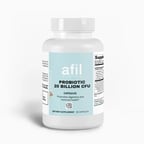Watercress
Watercress intolerance may be due to glucosinolates, isothiocyanates, or histamine sensitivity, leading to digestive discomfort or inflammation. Avoiding it for 8 weeks and trying milder greens can help.
🌿 What is Watercress?
Watercress is a leafy green from the Brassicaceae family, related to mustard, radish, and arugula. It has a peppery, slightly bitter flavor and is rich in vitamins A, C, and K, along with antioxidants and phytonutrients that support overall health.
🤔 Why do I have an intolerance to watercress?
Your intolerance to watercress may be caused by specific compounds, including:
- Glucosinolates – Sulfur-containing compounds that may cause digestive distress, bloating, or gas.
- Isothiocyanates – Spicy mustard-like compounds that can irritate the digestive tract.
- Histamine Response – Some people may experience mild allergic-like reactions, such as skin irritation or headaches.
- High Fiber Content – Can be difficult to digest for those with sensitive stomachs.
🛠️ What can I do about it?
- Avoid watercress for 8 weeks and monitor any symptoms.
- Replace with milder leafy greens like butter lettuce, spinach, or romaine (if tolerated).
- Reintroduce after 8 weeks and retest to assess tolerance.
- Cooking watercress can help reduce some of its irritating compounds.
💊 Which supplements do you recommend for intolerance and inflammation from watercress?
- Digestive Enzymes – Help break down plant compounds for easier digestion.

- Probiotics – Support gut health and reduce sensitivity to plant-based foods.

- Quercetin – A natural antihistamine that may help with mild inflammatory reactions.

- L-Glutamine – Supports gut lining repair and reduces irritation.

🌟 Why Might I Have an Intolerance to Watercress but Not Other Leafy Greens?
Watercress contains unique compounds that may not be found in other greens:
- Higher Glucosinolate Content – Unlike spinach or lettuce, watercress has more sulfur-based compounds that can trigger reactions.
- Isothiocyanates – Give watercress its peppery taste but may irritate sensitive digestive systems.
- Histamine Sensitivity – Some leafy greens, like romaine or butter lettuce, are lower in histamines and may be better tolerated.
🍽️ Popular Dishes That Contain Watercress
- Watercress salad
- Watercress soup
- Stir-fried watercress
- Watercress sandwiches
- Watercress in smoothies
🍽️ Alternatives (if tolerated)
- Spinach
- Romaine lettuce
- Butter lettuce
- Arugula (if tolerated)
- Bok choy
.png?width=100&height=75&name=AFIL%20Logo%20(1).png)